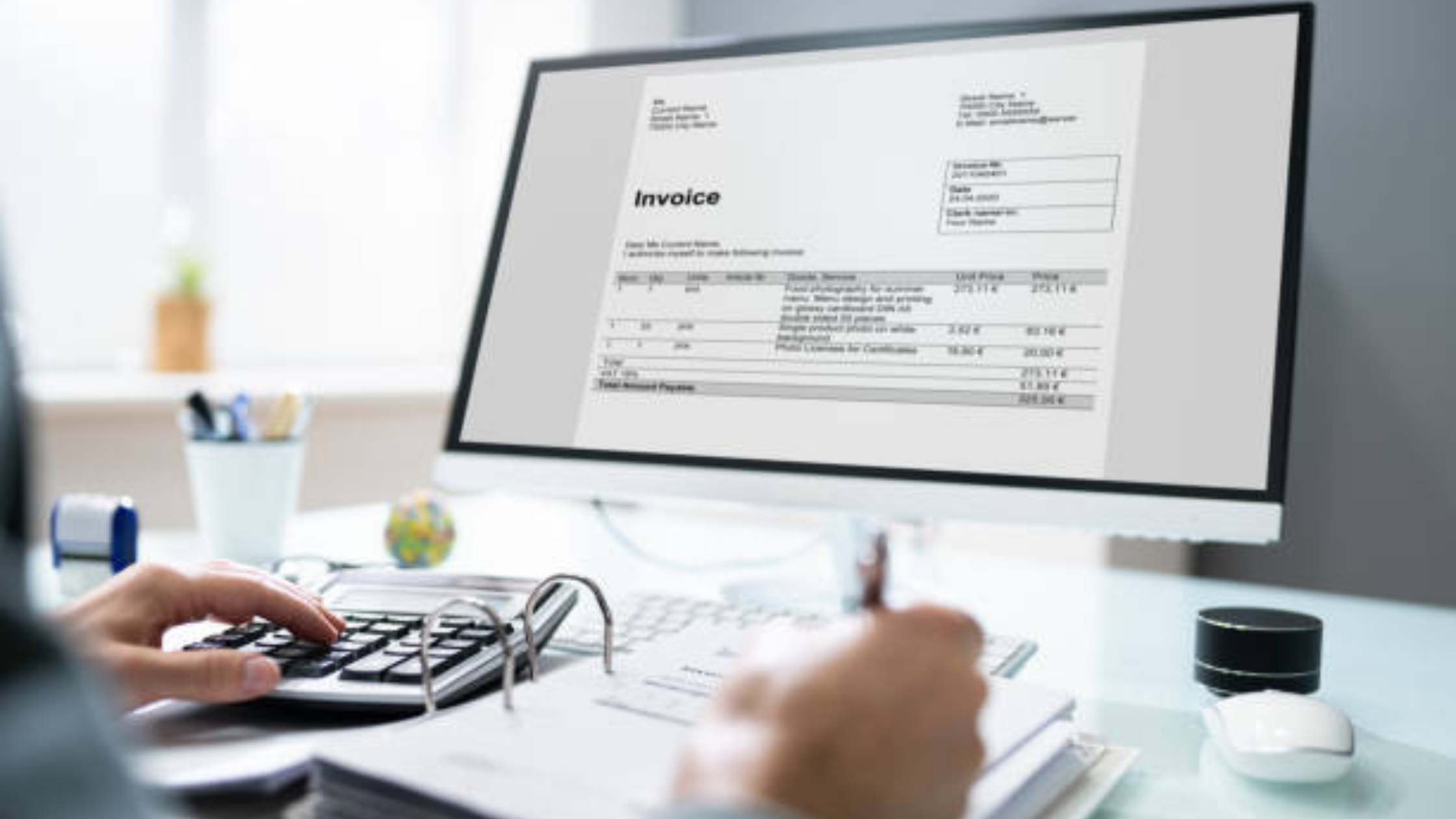Top 7 Tips for Creating Professional Book Invoices

Navigating the realm of independent publishing requires attention to detail and professionalism, especially when it comes to creating invoices. An invoice is more than just a payment request; it mirrors your dedication to your craft. To assist you in mastering this crucial aspect, we present seven essential tips. Whether you are a seasoned author or new to the publishing scene, these insights will streamline your financial processes and boost your industry credibility. From optimizing your invoice layout to ensuring all pertinent information is included, these tips empower you to present your billing details clearly and professionally. Join us as we explore the nuances of crafting invoices that not only facilitate seamless transactions but also leave a lasting impact on your clients and partners. Let's enhance your invoicing practices and pave the way for successful financial interactions in the publishing world.
Section: Tip 1: Clear and Detailed Information
In any transaction, providing clear and detailed information is crucial for a smooth process. When it comes to bookkeeping, accuracy is key. Here are some essential points to keep in mind:.
Book Title: Always include the title of the book to avoid any confusion. Mentioning the edition can also be helpful. This not only helps in identifying the book but also ensures that the right edition is being referred to, especially in cases where multiple editions exist.
Quantity: Clearly state the number of books being bought or sold. This helps in calculating the total cost accurately. Knowing the quantity is essential for inventory management and financial planning. It also aids in identifying any discrepancies that may arise during the transaction process.
Price: Specify the price of each book to give a clear breakdown of costs. Transparency in pricing is key to building trust with customers or clients. Clearly stating the price per book helps in setting the right expectations and avoids any misunderstandings regarding the cost.
Total Amount: Calculate the total amount based on the quantity and price per book. Double-check this to ensure accuracy. The total amount is a critical component in any transaction. It serves as the final figure that both parties agree upon and is crucial for financial reconciliation.
Emphasizing the necessity of accuracy in information is vital. Any discrepancies can lead to confusion and errors in financial records. By providing clear and detailed information, you can streamline the bookkeeping process and maintain accurate records. Remember, accuracy not only benefits your own records but also enhances trust and credibility with clients or partners. Taking the time to ensure that all details are clear and correct can save you from potential headaches down the line.
When it comes to bookkeeping, precision is paramount. The devil is in the details, and even the smallest oversight can have significant repercussions. Beyond the basic information like book title, quantity, price, and total amount, consider including additional details such as the date of the transaction, payment method, and any special terms or conditions. These extra details can provide a comprehensive overview of the transaction and serve as valuable references in the future.
Moreover, maintaining a standardized format for recording information can greatly facilitate the bookkeeping process. Whether you use digital tools or traditional ledgers, having a consistent layout for documenting transactions ensures clarity and ease of access. This organized approach not only saves time but also minimizes the risk of errors or omissions.
Clear and detailed information is the cornerstone of effective bookkeeping. By prioritizing accuracy, providing comprehensive details, and adopting a systematic recording method, you can enhance the efficiency and reliability of your financial records. Remember, the effort invested in maintaining clear and accurate information pays off in the long run, contributing to smoother transactions, improved decision-making, and strengthened relationships with stakeholders.
Tip 2: Professional Formatting
Utilizing a Consistent Layout and Design for All Invoices
First impressions matter. When it comes to invoicing, presenting a professional and consistent layout across all your invoices can make a significant impact. Consistency not only reflects your attention to detail but also helps in establishing your brand identity. By using the same format for all your invoices, you create a sense of reliability and professionalism that can enhance your business reputation.
Highlighting the Importance of a Professional Appearance
A well-formatted invoice not only looks visually appealing but also conveys a sense of credibility to your clients. It shows that you value your work and take your business seriously. A professional appearance can also help in expediting the payment process as clients are more likely to trust and prioritize invoices that are well-organized and easy to understand. Remember, professionalism in formatting is not just about aesthetics; it's also about building trust and fostering strong client relationships.
Importance of Clear and Detailed Descriptions
Apart from the layout and design, the content of your invoices plays a crucial role in maintaining professionalism. Ensure that your descriptions are clear, detailed, and accurately reflect the products or services provided. Avoid using vague terminologies that may confuse the client. A well-described invoice not only helps in avoiding disputes but also showcases transparency in your transactions.
Incorporating Brand Elements
To further enhance the professional appearance of your invoices, consider incorporating your brand elements such as logo, color scheme, and fonts. Brand consistency across all communication channels, including invoices, reinforces brand recognition and strengthens your brand image. It also adds a personalized touch to your invoices, making them more memorable and reinforcing your brand identity in the minds of your clients.
Utilizing Technology for Streamlined Invoicing
Leveraging technology can streamline your invoicing process and ensure consistency in formatting. Explore invoicing software that offers customizable templates, automated features, and easy integration with accounting systems. These tools not only save time but also reduce the risk of errors in formatting. Additionally, they provide insights into invoice status, payment reminders, and overall financial tracking, allowing you to manage your invoicing efficiently and professionally.
Conclusion
Professional formatting in your invoices is more than just a visual aspect; it is a reflection of your business values and professionalism. By maintaining consistency, clarity, and incorporating brand elements, you not only enhance the visual appeal of your invoices but also build trust with your clients. Remember, every interaction with your clients, including invoicing, is an opportunity to reinforce your brand identity and leave a lasting impression. Invest time and effort in professional formatting, and you will see the positive impact it has on your business relationships and overall reputation.
Tip 3: Timely Delivery
The Significance of Promptly Sending Invoices
Time is money. One crucial aspect of maintaining a healthy cash flow is ensuring that invoices are sent out promptly. Delayed invoicing can lead to delayed payments, which in turn can disrupt the financial stability of a business. By sending out invoices in a timely manner, businesses can streamline their payment processes and ensure that they receive payments on time.
How Timely Invoices Contribute to Improved Cash Flow
Timely invoicing plays a vital role in improving cash flow for businesses. When invoices are sent out promptly, it accelerates the payment cycle, leading to a more predictable and steady cash flow. This, in turn, allows businesses to better manage their expenses, invest in growth opportunities, and maintain financial stability. Additionally, timely invoicing helps in building trust and credibility with clients, as it reflects professionalism and efficiency in business operations.
Enhancing Customer Relationships
Apart from the financial benefits, sending invoices on time also contributes to enhancing customer relationships. Prompt invoicing shows clients that you value their time and business, which can lead to increased customer satisfaction and loyalty. It demonstrates your commitment to providing excellent service and conducting business in a transparent and organized manner.
Leveraging Technology for Timely Invoicing
Businesses have access to various tools and software that can streamline the invoicing process. Leveraging technology can help automate invoicing tasks, set up recurring invoices, and send reminders for overdue payments. By utilizing these technological solutions, businesses can ensure that their invoicing is not only timely but also accurate and efficient.
Importance of Clear Payment Terms
In addition to sending invoices promptly, it is essential to include clear payment terms on the invoices. Clearly outlining payment due dates, accepted payment methods, and any late payment penalties can help avoid misunderstandings and disputes. This transparency fosters a positive relationship between the business and its clients, promoting timely payments and reducing the risk of payment delays.
Implementing a Follow-Up Strategy
While sending invoices on time is crucial, following up on unpaid invoices is equally important. Implementing a follow-up strategy for overdue payments can help businesses recover outstanding debts and maintain a healthy cash flow. Sending polite reminders, making phone calls, or offering payment plans can encourage clients to settle their invoices promptly, ensuring that the business receives its due payments.
Conclusion
Timely delivery of invoices is a fundamental practice that can significantly impact a business's cash flow, financial stability, and customer relationships. By prioritizing prompt invoicing, including clear payment terms, leveraging technology for efficiency, and implementing a follow-up strategy for overdue payments, businesses can optimize their invoicing processes and ensure a steady flow of revenue. Remember, in the competitive business landscape, timely invoicing is not just about getting paid on time but also about fostering trust, reliability, and long-term partnerships with clients.
Tip 4: Personalization
Adding a Personalized Touch to Invoices
Personalization can go a long way in enhancing client relationships. When it comes to invoicing, adding a personalized touch can make your clients feel valued and appreciated. Here are some key points to consider:.
Client's Name : Addressing the client by their name on the invoice can make the communication more personal and engaging.
Customized Messages : Including a brief personalized message expressing gratitude for their business can leave a lasting impression.
Tailored Payment Terms : Offering flexible payment terms based on the client's preferences can show that you value their needs.
Branding Elements : Incorporating your company's branding elements such as logo, colors, and fonts can make the invoice visually appealing and reinforce brand recognition.
By personalizing your invoices, you not only demonstrate attention to detail but also show that you care about your clients' experience. This simple yet effective strategy can help strengthen client relationships and set you apart from the competition.
Personalization is not just a trend but a powerful tool in the business world. It creates a connection between you and your clients that goes beyond the transactional aspect. When a client receives an invoice that is tailored specifically to them, it shows that you have taken the time to understand their needs and preferences.
Moreover, personalization can also lead to increased customer loyalty. Clients are more likely to return to a business that makes them feel valued and appreciated. By customizing your invoices, you are not only building a stronger relationship with your existing clients but also increasing the chances of repeat business.
In addition to the points mentioned earlier, consider personalizing the payment schedule based on each client's unique situation. This level of flexibility can set you apart from competitors who offer rigid payment terms. Remember, the goal is to make the invoicing process as smooth and pleasant as possible for your clients.
Furthermore, don't underestimate the impact of small gestures. Adding a handwritten note or a personalized discount can make a significant difference in how your clients perceive your business. These thoughtful touches can leave a lasting impression and contribute to long-term client satisfaction.
Personalization is a simple yet effective way to strengthen client relationships and differentiate your business in a competitive market. By incorporating personalized elements into your invoices, you not only showcase your professionalism but also demonstrate your commitment to providing exceptional customer service. Embrace personalization as a core strategy in your invoicing process and watch how it transforms your client interactions for the better.
Tip 5: Payment Terms and Methods
The Significance of Clearly Outlining Payment Terms and Methods on the Invoice
When it comes to managing your invoicing process effectively, one of the key aspects that can have a profound impact on your business is the clear and detailed presentation of payment terms and methods. This particular section of the invoice serves as a vital communication tool between you and your clients. By explicitly specifying the due date, accepted payment methods, and any potential late payment penalties, you establish a foundation of transparency and trust in your business relationships.
Strengthening Client Relationships through Transparent Payment Terms
Transparent payment terms not only help in streamlining your financial operations but also play a crucial role in nurturing strong client relationships. Providing clients with a comprehensive understanding of the payment expectations showcases professionalism and dependability on your part. This level of transparency can lead to heightened client satisfaction and loyalty, ultimately benefiting your business in the long term.
The Influence of Transparent Payment Terms on Timely Payments
By integrating transparent payment terms into your invoicing procedures, you not only reduce the risk of payment delays but also foster a culture of punctual payments. When clients are fully aware of the payment deadlines and methods, they are more inclined to adhere to the agreed-upon terms. This proactive approach not only ensures a consistent cash flow for your business but also minimizes the necessity for follow-ups and collection efforts.
Harnessing Technology for Streamlined Payment Processes
Leveraging digital tools can further enhance your payment processes. Implementing online payment portals, automated reminders, and secure payment gateways can elevate the overall invoicing experience for both you and your clients. These technological innovations not only boost efficiency but also contribute to a smooth and hassle-free payment experience.
In summary, dedicating attention to clearly outlining payment terms and methods on your invoices is a strategic investment in the success and longevity of your business. By prioritizing transparency, communication, and efficiency in your payment procedures, you can establish a robust foundation for financial stability and expansion.
Conclusion
Mastering the art of creating professional book invoices is crucial for authors and publishers alike. By following the top 7 tips outlined in this blog, individuals can streamline their invoicing process, maintain a professional image, and ensure timely payments for their hard work. Embracing these best practices will not only enhance efficiency but also contribute to a successful and sustainable book publishing business.







